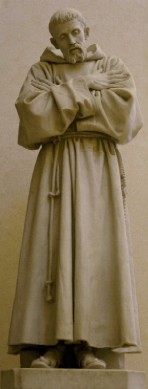Summorum Pontificum does not create an ecclesiastical Jurassic Park
We must remember that not all things pertaining to Mass are contained in the ritual itself. Canon law, liturgical law, and even some local law (ie liturgical instructions for certain regions or countries) also have a part in how things in the liturgy are carried out.
I especially wish to point out Canon #846 of the current Code of Canon Law:
Canon #846 - 1. The liturgical books approved by the competent authority are to be faithfully observed in the celebration of the sacraments; therefore no one on personal authority may add, remove, or change anything in them.
This is something Pope Benedict specifically addressed in his accompanying letter to "Summorum Pontificum", the problem of bishops, priests, and laity not following the liturgical instructions of the "Novus Ordo" and being "creative" with the liturgy.
"This [desire for the older form of Mass] occurred above all [my emphasis] because in many places celebrations were not faithful to the prescriptions of the new Missal, but the latter actually was understood as authorizing or even requiring creativity, which frequently led to deformations of the liturgy which were hard to bear."-Letter from Pope to bishops on "Summorum Pontificum"
Unfortunately this "creativity" has given rise to the mindset in many priests formed since Vatican II, whether they be of liberal or conservative bent, that they can make any changes they want to the "Novus Ordo." While making changes might be the status quo or what is done in practice, this is NOT the mind of the Church.
Really, the only thing "Summorum Pontificum" did was to allow the older form of Mass to be said without special permission. It puts it on equal ground with the newer form of Mass. It did NOT call for a hybridization of the Masses. Ritual and rubrics from the old use cannot be inserted into the new use and vice-versa. I believe the Pope's intent is that by having these two forms side by side, it will lead to a better understanding of each use in and of itself, and eventually lead to a fruitful and organic reform of the liturgy in the future.
However, we must also see that both forms of the Mass must also conform to the current universal liturgical and canonical laws. The former 1917 Code of Canon Law was abrogated (see Canon #6 - 1 of the 1983 Code of Canon Law) thus the older form will have to be looked at in light of the current Code of Canon Law. However, this is exactly one of the responsibilities of the Ecclesia Dei commision as set forth in "Summorum Pontificum". So let's learn a lesson from the chaos after Vatican II and "festina lente" when dealing with either form of the Mass. I'm enthusiastic about the older form too, but let's do liturgical reform right this time instead of hastily.
RS








